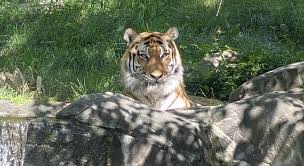Syllabus:
GS2: Important International Institutions, agencies and fora – their Structure, Mandate.
GS3: Conservation, Environmental Pollution and Degradation, Environmental Impact Assessment.
Context:
The Convention on International Trade in Endangered Species of Wild Fauna and Flora (CITES) marks 50 years since it entered into force on 1st July.
CITES Origin:
- The Convention was created in response to growing concerns about the impact of international trade on wildlife populations.
- First drafted at a meeting of the International Union for Conservation of Nature (IUCN) in 1963.
- It was opened to the world’s governments for signature on 3 March, 1973 in Washington DC, at the end of the Plenipotentiaries Conference hosted by the United States of America also known as the ‘World Wildlife Conference’.
- Thus, first entered into force on 1 July 1975.
- With 185 Parties (184 countries and the European Union), it remains one of the world’s most powerful tools for wildlife conservation through the regulation of international trade in over 40,000 species of wild animals and plants.
- India is a Party to the CITES since 1976.
- The CITES Secretariat is administered by the United Nations Environment Programme (UNEP), and is located at Geneva, Switzerland.
Working Procedure
- The CITES Conference of the Parties (CoP), held every three years, is supported by key committee and working group meetings in the interim to implement decisions and prepare future recommendations.
- CITES uses three appendices to categorize species according to the protection they require. Each appendix lists different species and outlines specific rules for international trade, based on their extinction risk and the threat posed by trade.
Appendix I
- The most endangered species among CITES-listed animals and plants are listed in Appendix I. These species are at the highest risk of extinction and are severely threatened by international trade.
- International trade in specimens of these species is generally prohibited, except in exceptional circumstances, like for scientific research. Permits are required from both the exporting and importing countries.
Appendix II
- Appendix II includes species that aren’t currently endangered but may become so without regulated trade, including look-alike species needing monitoring.
- International trade is allowed but controlled with CITES permits issued by the exporting country; some countries also require import permits.
Appendix III
- Appendix III includes species listed by a country that already regulates their trade and seeks international support to prevent illegal or unsustainable use.
- Trade is allowed with a certificate of origin and sometimes an export permit; only about 1% of CITES-listed species fall under this category.
Species may be added to or removed from Appendix I and II, or moved between them, only by the Conference of the Parties (CoP).
At each regular meeting of the CoP, Parties submit proposals based on those criteria to amend these two Appendices I and II.
Those amendment proposals are discussed and then submitted to a vote.
Changes to Appendix III follow a distinct procedure from changes to Appendices I and II, as each Party is entitled to make unilateral amendments to it.
Significance of the CITES
Preventing Species Extinction: CITES regulates international trade in over 36,000 plant and animal species to prevent over-exploitation, protect vulnerable species, and curb illegal and unsustainable trade.
- A key initiative, the Monitoring the Illegal Killing of Elephants (MIKE) Programme, operates at over 70 sites across Africa and Asia, covering roughly half of the pachyderm population. MIKE data has contributed to a downward trend in illegal killings, especially in Africa.
Promoting Sustainable Use of Natural Resources: CITES promotes sustainable use of natural resources by regulating trade to prevent depletion of endangered species, including in forestry and fisheries.
Enhancing Biodiversity Conservation: CITES helps conserve global biodiversity by regulating trade in endangered species, maintaining ecological balance, and supporting entire ecosystems.
Fostering International Cooperation: CITES fosters cooperation among 185 member countries to regulate trade, share data, and combat illegal wildlife trafficking—essential for conserving globally traded and migratory species.
Enhancing Biodiversity Conservation: CITES helps conserve global biodiversity by regulating trade in endangered species, maintaining ecological balance, and supporting entire ecosystems.
Supporting Local Livelihoods: CITES supports sustainable trade that balances wildlife conservation with local livelihoods, recognizing communities’ reliance on natural resources, like income from crocodile products.
Raising Awareness: CITES raises global awareness about biodiversity and the impact of trade on endangered species, promoting conservation, responsible trade, and informed consumer choices.

